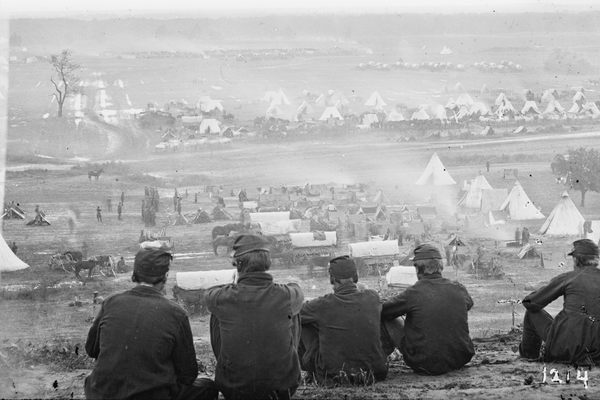How to Raise an Army by Debasing Your Currency and Screwing Your Neighbor
During the 17th century “Kipper und Wipper” crisis, German states made bad coins and tried to pawn them off on neighboring states.

Coin debasers hard at work. (Photo: Public domain)
In the early 17th century, Germany’s numerous lords, princes, and sundry other rulers had a problem. This area of the world was on the verge of a war. A big one.
Wars cost money, and at that time money was still made from actual precious metal. Wars were paid for in gold and silver, and that’s what these soon-to-be warlords needed. That hunger for precious metals set off one of the most dramatic financial crises in European history, the “Kipper und Wipper” period, in which neighboring states were actively defrauding each other with bad currency.
In the early 1620s, when the crisis peaked, Germany as we know it today didn’t exist yet; there was only a collection of German states united under the failing Holy Roman Empire. Many of Germany’s states minted their own coins, and they could vary from state to state, especially in small denominations. What made these coins valuable, no matter what border they crossed, was the silver within.
But, to raise money, it was possible to create coins with less precious metals than the value stamped on their face. Kipper und Wipper, a term that came from contemporary pamphlets and broadsheets, refers to the clipping of coins’ edges and the swinging of the scales as good money was exchanged for bad.
Charles P. Kindleberger, author of Manias, Panics and Crashes, gives the most comprehensive English-language account of the crisis. A simple way to debase currency was to trim off the edges and use that metal to make new coins. A more complicated way was to create a whole new batch of coins that contained a higher proportion of copper—although not so much that it’d be obvious. Either way, the coins were worth less than they were supposed to be.
The coin altering practice probably began in northern Italy, but by the beginning of the 17th century, the debased coins had spread. Towards the end of the 1610s, as the Thirty Years War began, traders in German states started aggressively swapping bad coin for good. An excellent way to do this was to take debased money from one place, cross a border to a place where the currency had not yet been debased, and trade doctored money for above-board money. Then, you could take the honest money, with its higher silver content, back to the mint, extract a portion of the silver as profit, and take your newly minted bad money back out into the world to trade it for good money again.

Debased coins. (Photo: Public domain)
These sort of trades had a domino effect. The state that had gotten the bad end of this deal then had an incentive to go ahead and debase its coins, and trade its now-adulterated currency for the legitimate currency of a new place. Soon the southern German states were awash in “Kippergeld”—coins that weren’t worth much of anything. Some coins had been stripped of their silver entirely and were just copper coins, made to look kind of silvery.
These practices only affected small coins: larger denominations of silver and gold were left alone. Accordingly, some people, often poorer people, did very badly in this era. Some people, often richer people, did very well. It was a profitable enough practice that mints started popping up everywhere: Kindleberger notes that the number of mints in Brunswick, a city in Lower Saxony, more than doubled in just three years.
Eventually, the monetary system was in such bad shape that German states entered into a mint treaty that reset the value of currency and reinstated some controls on the mints that made them. Bad coins were taken out of circulation and good ones made to replace them. But not before whole fortunes were made by aggressively screwing over one’s neighbor.













Follow us on Twitter to get the latest on the world's hidden wonders.
Like us on Facebook to get the latest on the world's hidden wonders.
Follow us on Twitter Like us on Facebook